Coins Study Guide
Introduction to Coins
Coins are a form of currency used in many countries around the world. They come in different denominations and are used to make purchases, pay for services, and as a form of saving.
Types of Coins
There are several common denominations of coins, including:
- 1 cent (penny)
- 5 cents (nickel)
- 10 cents (dime)
- 25 cents (quarter)
- 50 cents (half-dollar)
- 1 dollar (dollar coin)
Identifying Coins
Each coin has distinct characteristics to help identify them:
- Penny: It is a small, copper-colored coin with Abraham Lincoln's portrait on the front.
- Nickel: A slightly larger coin with a silver color and features a portrait of Thomas Jefferson.
- Dime: The smallest and thinnest coin, it has a silver color and features Franklin D. Roosevelt.
- Quarter: Larger than the dime, it has a silver color and features George Washington.
- Half-dollar: A larger, silver-colored coin with President John F. Kennedy's portrait.
- Dollar coin: Slightly larger than a quarter, it comes in various designs, such as the Sacagawea or Susan B. Anthony dollar.
Value of Coins
Each coin has an assigned value:
- Penny: 1 cent
- Nickel: 5 cents
- Dime: 10 cents
- Quarter: 25 cents
- Half-dollar: 50 cents
- Dollar coin: 1 dollar
Using Coins
Coins are used to make exact change and can be combined to represent different amounts. Understanding their values is important for everyday transactions.
Conclusion
Understanding the different types of coins, their values, and how to identify them is an important skill for managing money and making transactions.
.◂Math Worksheets and Study Guides Fourth Grade. Represent Data
Study Guide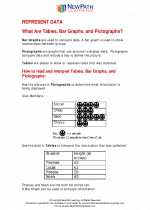 Represent Data
Represent Data  Worksheet/Answer key
Worksheet/Answer key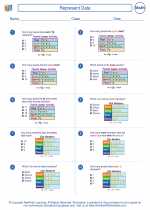 Represent Data
Represent Data  Worksheet/Answer key
Worksheet/Answer key Represent Data
Represent Data  Worksheet/Answer key
Worksheet/Answer key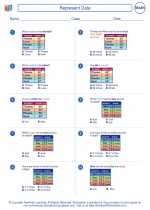 Represent Data
Represent Data  Worksheet/Answer key
Worksheet/Answer key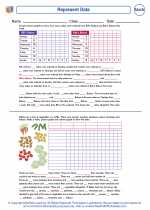 Represent Data
Represent Data  Worksheet/Answer key
Worksheet/Answer key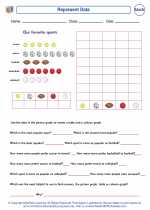 Represent Data
Represent Data  Worksheet/Answer key
Worksheet/Answer key Pie Chart Budget
Pie Chart Budget  Worksheet/Answer key
Worksheet/Answer key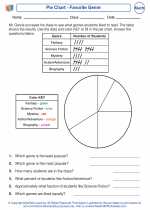 Pie Chart - Favorite Genre
Pie Chart - Favorite Genre 

 Worksheet/Answer key
Worksheet/Answer key
 Worksheet/Answer key
Worksheet/Answer key
 Worksheet/Answer key
Worksheet/Answer key
 Worksheet/Answer key
Worksheet/Answer key
 Worksheet/Answer key
Worksheet/Answer key
 Worksheet/Answer key
Worksheet/Answer key
 Worksheet/Answer key
Worksheet/Answer key

The resources above cover the following skills:
Measurement and Data (MD)
Represent and interpret data.
Supporting Standard: Make a line plot to display a data set of measurements in fractions of a unit (1/2, 1/4, 1/8). Solve problems involving addition and subtraction of fractions by using information presented in line plots. For example, from a line plot find and interpret the difference in length between the longest and shortest specimens in an insect collection.
See the skills and knowledge that are stated in the Standard.